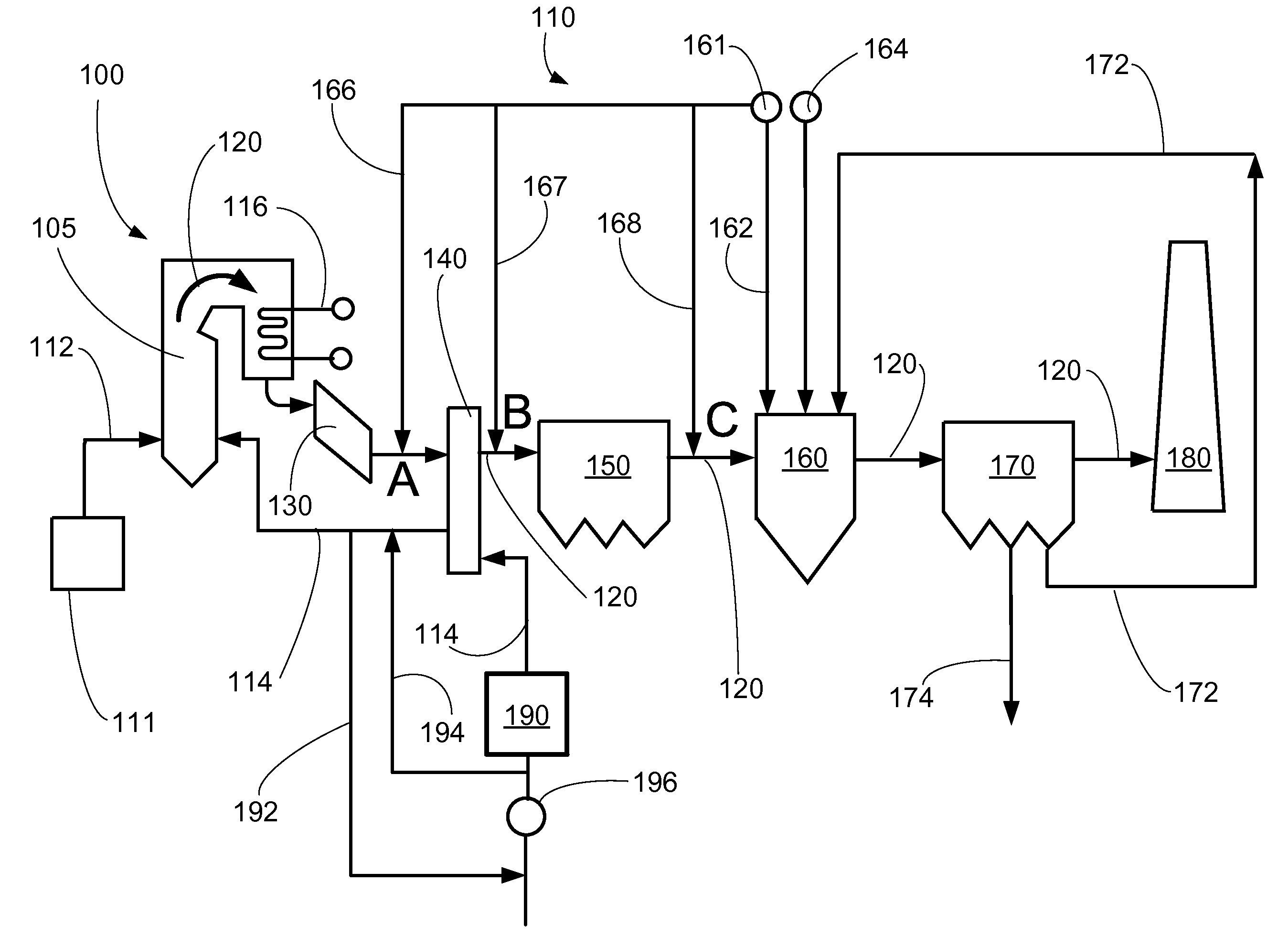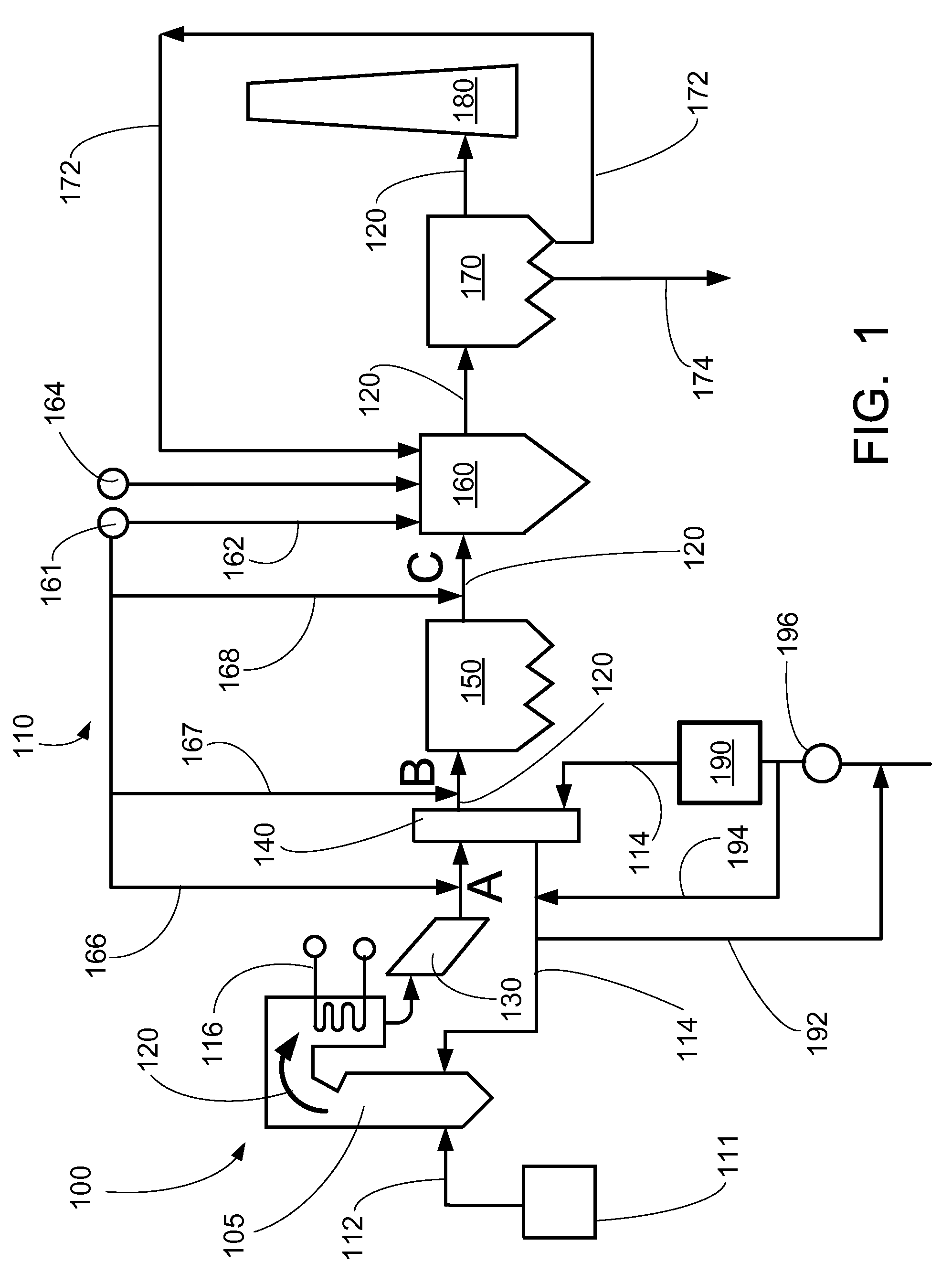Integrated sorbent injection and flue gas desulfurization system
a flue gas desulfurization and sorbent injection technology, which is applied in the direction of lighting and heating apparatus, emission prevention, separation processes, etc., can solve the problems of uncaptured energy that is leaving the boiler envelope (as heat in the flue gas) and reduce the boiler efficiency, so as to improve the boiler efficiency and plant heat rate, and ensure safe operation.
- Summary
- Abstract
- Description
- Claims
- Application Information
AI Technical Summary
Benefits of technology
Problems solved by technology
Method used
Image
Examples
example 1
[0063]In a proposed application involving medium sulfur coal, the expected acid dew point temperature (ADP) based on uncontrolled SO3 formation was calculated to be 289° F. leaving the air heater. Application of dry sorbent injection (DSI) upstream of the air heater lowered the expected ADP to 256° F. The difference between these temperatures (33° F.) represents energy that could be safely recovered with typical heat transfer equipment and no additional corrosion risk. To realize this benefit by transferring additional heat, the boiler's economizer and air heater surfaces can be increased. The boiler efficiency gain associated with this method was approximately 0.8%. Resulting auxiliary power consumption improved as well, and total sorbent consumption was reduced by the same 0.8% (since 0.8% less flue gas and associated emissions were produced). CO2 emissions were likewise reduced by 0.8% because less fuel is combusted. Because of the improved boiler efficiency realized in the integ...
example 2
[0065]As illustrated in FIG. 5, applying dry sorbent upstream of the air heater permits the safe operating flue gas exit temperature (at the hot flow pass outlet) to be reduced to 240° F. If CDS is chosen for desulfurization, the integrated system could be designed for 250° F., thus achieving 30° F. reduction from the case when dry sorbent is not applied upstream (280° F.). If SDA is chosen for desulfurization, a temperature of 270° F. can be designed for. Again, total sorbent consumption is no greater than the initial “uncontrolled” scenario; in fact, sorbent consumption is reduced since less fuel is combusted and less SO3 is generated in the boiler.
example 3
[0066]In this example illustrated in FIG. 6, the safe operating air heater exit gas temperature for the flue gas can be reduced from 320° F. to 280° F. Both CDS and SDA can operate effectively at 280° F., so the integrated system permits this 40° F. reduction in flue gas temperature. Again, the total sorbent consumption has been reduced as described above. The overall emissions coming from the boiler decrease due to reduced fuel flow (better plant efficiency).
PUM
| Property | Measurement | Unit |
|---|---|---|
| temperature | aaaaa | aaaaa |
| temperature | aaaaa | aaaaa |
| temperature | aaaaa | aaaaa |
Abstract
Description
Claims
Application Information
 Login to View More
Login to View More - R&D
- Intellectual Property
- Life Sciences
- Materials
- Tech Scout
- Unparalleled Data Quality
- Higher Quality Content
- 60% Fewer Hallucinations
Browse by: Latest US Patents, China's latest patents, Technical Efficacy Thesaurus, Application Domain, Technology Topic, Popular Technical Reports.
© 2025 PatSnap. All rights reserved.Legal|Privacy policy|Modern Slavery Act Transparency Statement|Sitemap|About US| Contact US: help@patsnap.com



